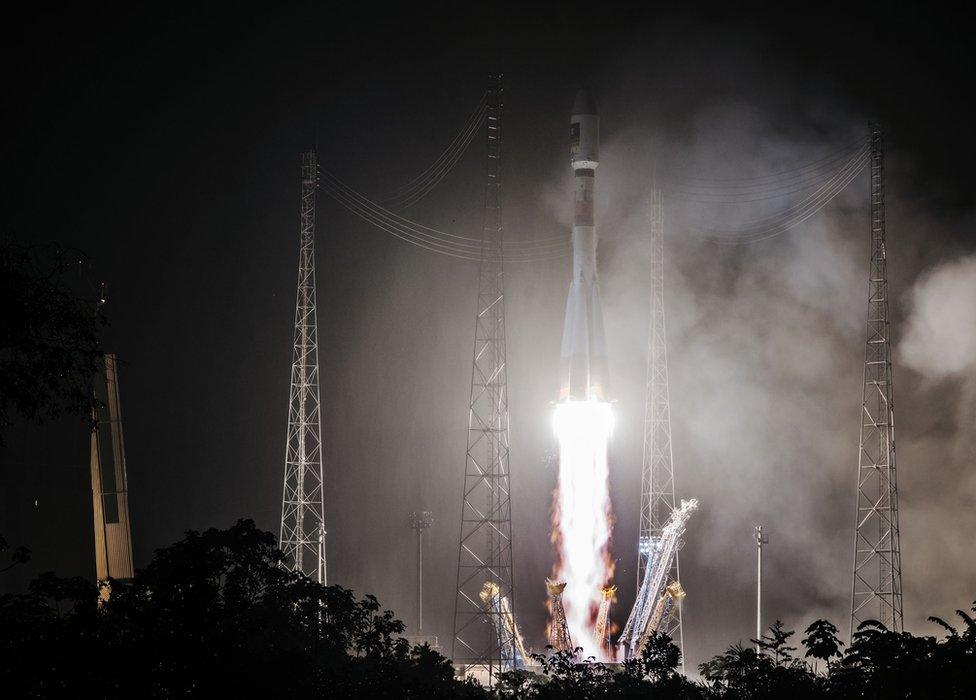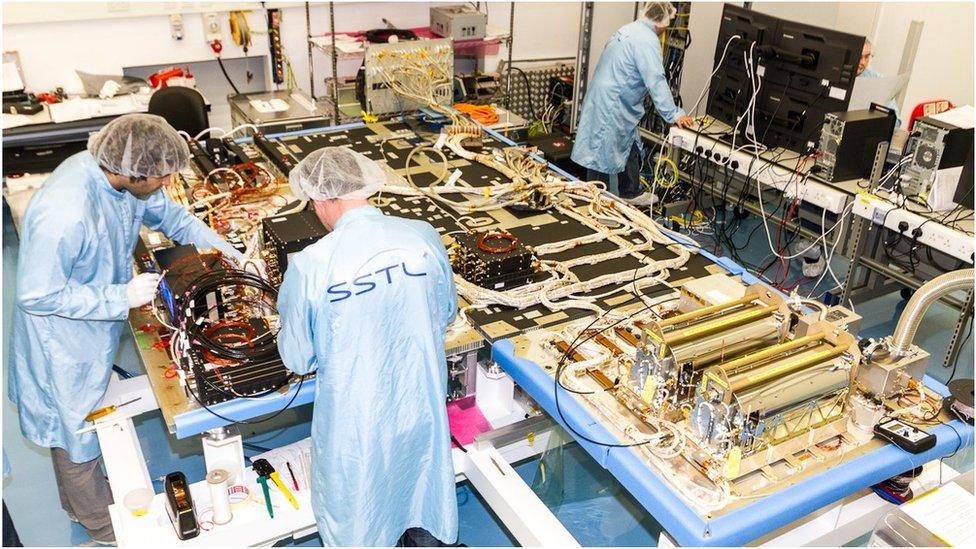EU's Galileo system launches satellites 13 and 14
- Published

An early morning launch for Soyuz from its Sinamary pad in French Guiana
Two more satellites in Europe's Galileo network have been launched to orbit.
The spacecraft, once commissioned, will bring to 14 the number of platforms in the EU's version of GPS.
With another four satellites set to go up in a few months, Galileo is now on course to start the public transmission of initial navigation and timing services before the end of the year.
Tuesday launch was performed as usual by a Soyuz rocket flying out of Sinamary in French Guiana.
The Russian medium-lift vehicle left the ground at precisely 05:48 local time (08:48 GMT).
The deployment into a circular orbit some 23,000km above the Earth occurred three and three-quarter hours later. European controllers communicated the spacecraft to confirm their good health and correct orbital parameters.
The EU is investing billions in its sat-nav project. It believes Galileo will bring significant returns to member-state economies in the form of new businesses that can exploit precise timing and location data, delivered from orbit.
Galileo's next-generation technologies are designed to provide users with quicker, more reliable fixes, enabling them to locate their positions with an error of one metre, compared with the current GPS error of several metres.
But the use of sat-nav signals goes far beyond just finding one's way through an unfamiliar city. Its timing function has now become ubiquitous in many fields, including in the synchronisation of global financial transactions, telecommunications and energy networks.

The Soyuz can carry two Galileo satellites on one mission
Each new Galileo spacecraft is made by a German-UK consortium.
Surrey Satellite Technology Limited of Guildford prepares the payload - the "brains" of each spacecraft. These come off an assembly line every six weeks and are shipped to Bremen where OHB System integrates them with service and propulsion modules ready for flight.
Each satellite costs about 30 million euros.
SSTL has just completed delivery of its 22nd and last payload under the present contract arrangements.
The European Commission is currently in the middle of a tender process for more spacecraft. It needs additional platforms to meet its stated aim of having a fully operational constellation of 30 satellites (the number includes spares) by the decade's end.
The next Galileo launch will be different from all previous ones, in that it will see the use of an Ariane rocket for the first time. This vehicle has the muscle to loft four 700kg satellites at once - something that is beyond the capability of the Soyuz.

More satellites are set to be ordered by the European Commission
- Published13 May 2016
